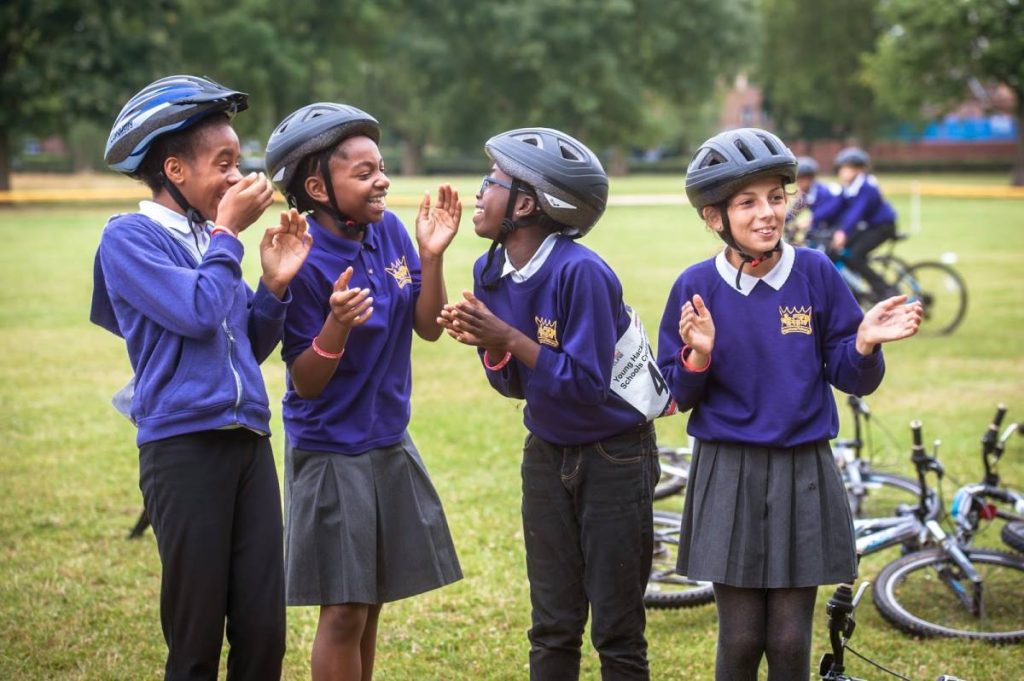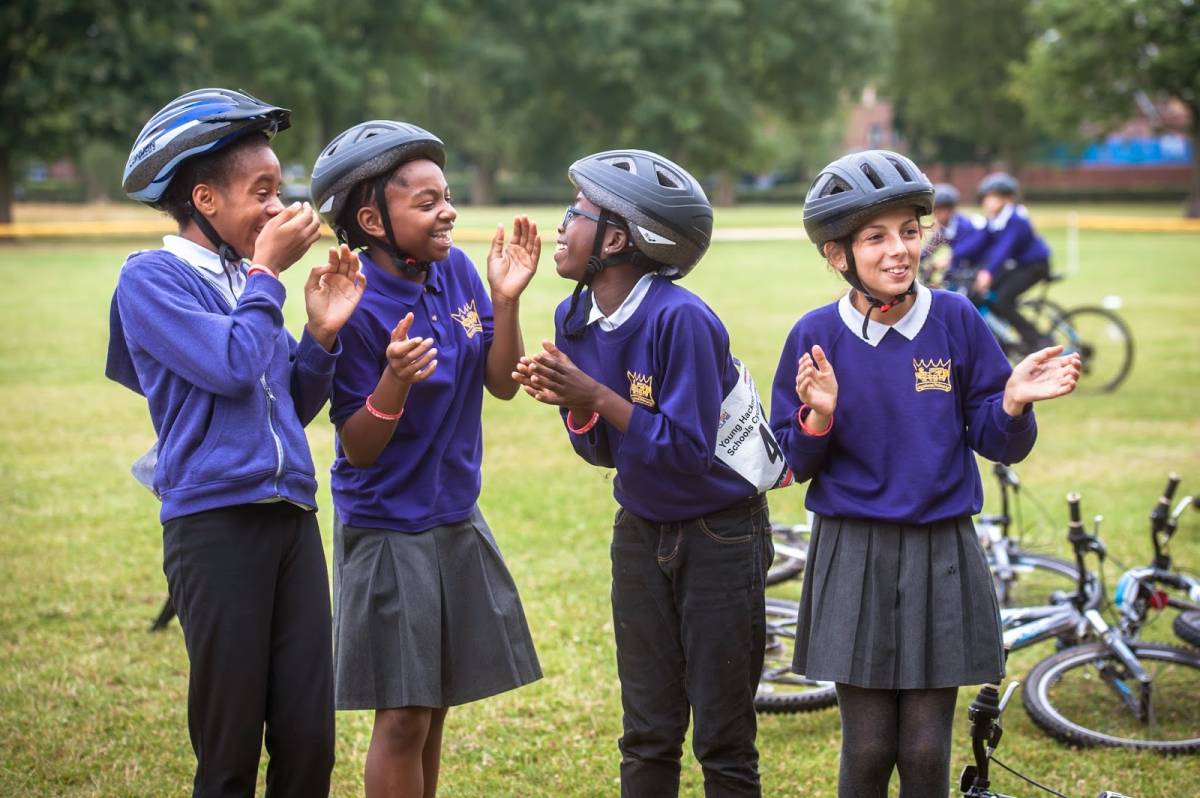Starting a school cycling club is a fantastic way to encourage physical activity, promote sustainable transport, and build a sense of community among students. With the increasing focus on health, well-being, and environmental consciousness, cycling is an ideal activity that aligns with these values. This guide will walk you through the steps to establish a successful school cycling club, offering practical advice for teachers, students, and parents alike.
1. Gauge Interest and Form a Core Group
The first step in starting a school cycling club is to determine if there’s enough interest among students and staff. Start by conducting a survey or hosting an informal meeting to see who would be interested in joining. Look for a mix of students across different year groups, as well as teachers or staff members who can serve as club advisors.
Once you have a core group of interested individuals, hold a more formal meeting to discuss the vision and goals of the club. This is a great time to elect a student committee, assign roles (such as president, treasurer, and secretary), and decide on a regular meeting schedule.
2. Set Clear Goals and Objectives
Every successful club needs a clear set of goals and objectives. For a school cycling club, these might include:
- Promoting fitness and healthy lifestyles among students.
- Encouraging safe cycling practices and road safety awareness.
- Organizing regular group rides and participating in local cycling events.
- Supporting environmental sustainability by promoting cycling as a mode of transport.
- Building a sense of community among students of different ages and backgrounds.
By establishing clear goals, you give your club direction and purpose, making it easier to plan activities and measure your success.
3. Obtain Support from School Administration
For your club to thrive, it’s essential to have the backing of your school administration. Prepare a proposal outlining the club’s goals, planned activities, and the benefits to the school community. Highlight how the club will promote physical health, environmental awareness, and student engagement.
Administrators will likely be concerned about safety and liability, so be ready to discuss how the club will address these issues. For instance, you might propose mandatory helmet use, safe cycling training, and adherence to local traffic laws. Obtaining support from your school can also help with securing resources like meeting spaces, funding, and promotional opportunities.
4. Plan Activities and Events
Once you have the administration’s support, it’s time to start planning activities. A successful cycling club should offer a variety of events and opportunities to cater to different skill levels and interests. Here are some ideas:
- Regular Group Rides: Organize weekly or bi-weekly rides that accommodate all skill levels. These can range from short rides around the school grounds to longer excursions in the local area.
- Cycling Clinics and Workshops: Host sessions on bike maintenance, road safety, and cycling techniques. Consider bringing in local experts or partnering with a nearby bike shop.
- Competitive Events: If there’s interest, organize or participate in inter-school cycling competitions, time trials, or charity rides. This can add an exciting element to the club and give students something to train for.
- Community Engagement: Encourage students to participate in community cycling events, such as charity rides or environmental awareness campaigns. This can help raise the club’s profile and foster a sense of civic responsibility.
- Fundraising and Social Events: Plan social activities such as movie nights, bike-themed quizzes, or fundraisers to support the club’s activities and build camaraderie.
5. Focus on Safety
Safety should be a top priority for any cycling club. Ensure that all members understand the importance of wearing helmets, using lights and reflective gear, and following traffic rules. Consider offering a cycling safety course as part of your club’s induction process, covering topics like:
- Proper Helmet Fitting: Teach students how to fit their helmets correctly to maximize protection.
- Basic Bike Maintenance: Ensure that all bikes are in good working order with properly inflated tires, functioning brakes, and working lights.
- Road Safety: Educate students on the rules of the road, including hand signals, understanding traffic signs, and how to ride safely in a group.
In addition, establish a clear set of safety guidelines for group rides. This might include a mandatory headcount before and after rides, designated ride leaders and sweepers, and a strict no-headphones rule to ensure that everyone stays alert.
6. Secure Funding and Resources
Starting a cycling club may require some initial funding for equipment, such as helmets, reflective gear, or even a few bikes for students who don’t have their own. Consider the following options for securing funding:
- School Budget: Request a small budget from the school to cover essential items.
- Fundraisers: Organize events like bake sales, sponsored rides, or car washes to raise money for the club.
- Grants and Sponsorships: Look for local businesses, cycling shops, or community organizations that might be willing to sponsor the club or donate equipment. Additionally, there are grants available specifically for promoting physical activity and cycling in schools.
7. Promote Your Club
To attract more members and build excitement, promote your club within the school community. Use posters, social media, and the school’s newsletter to spread the word. You could also host an open house event or a “try-out” ride to give students a taste of what the club has to offer.
Encourage current members to bring friends along to meetings or rides, and consider creating a club website or blog to share updates, ride reports, and photos.
8. Evaluate and Grow
Finally, regularly evaluate the club’s progress and seek feedback from members. Are the activities meeting their needs? What can be improved? Use this feedback to adjust your plans and keep the club evolving.
As the club grows, you might consider expanding its activities or partnering with other schools to organize larger events. The key is to remain flexible, responsive to members’ interests, and committed to the club’s core mission.
Conclusion
Starting a school cycling club can be a rewarding experience that offers students a unique way to stay active, develop new skills, and make lasting friendships. By following these steps and fostering a positive, inclusive environment, you’ll be well on your way to creating a thriving club that benefits the entire school community. Happy cycling!

